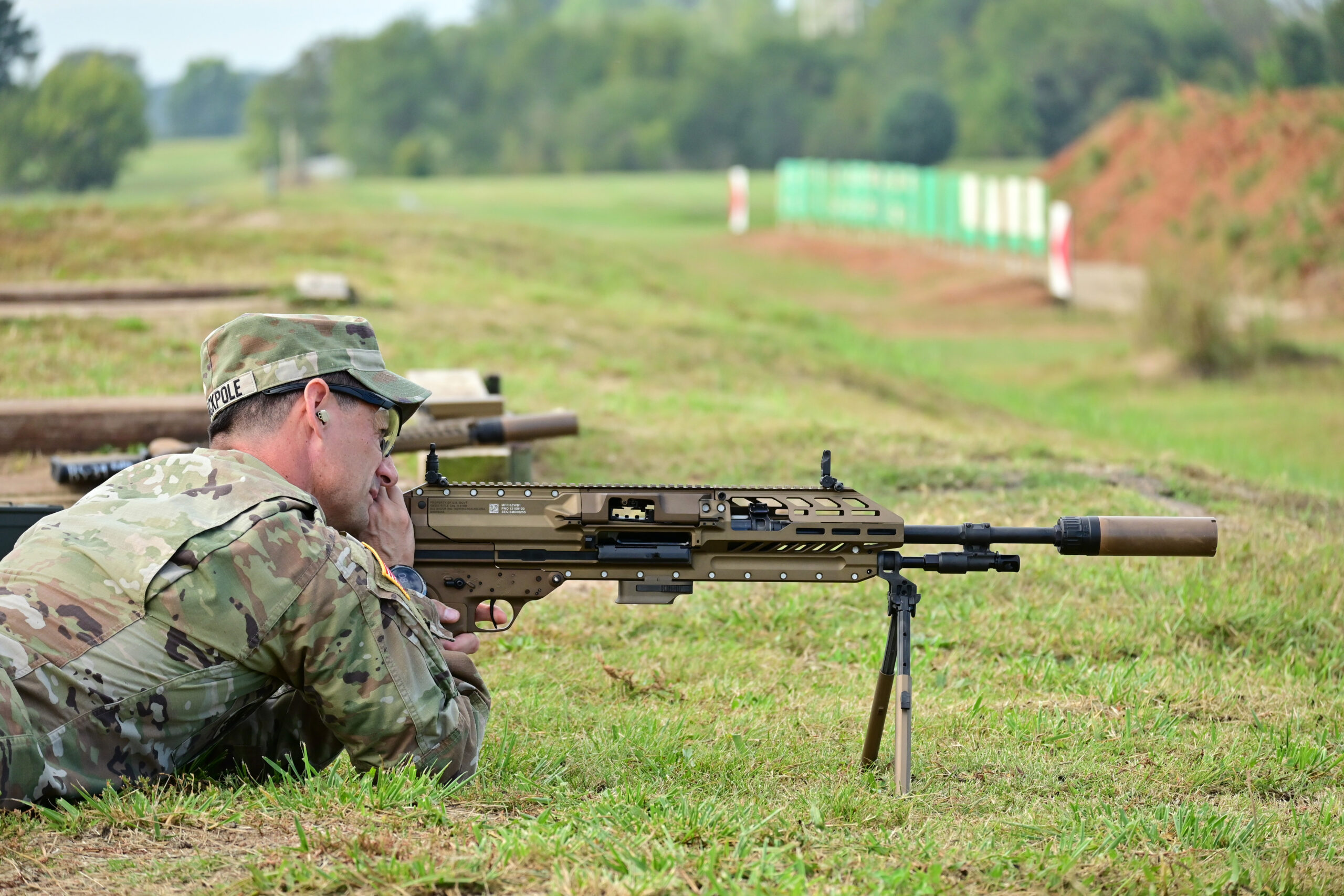

The Army released its first pictures of the Next Generation Squad Weapon in the hands of soldiers at Fort Campbell, Kentucky on Wednesday.
The XM7 rifle and the XM250 squad automatic weapon were delivered to squads within the 101st Airborne Division in late September as the first operational users of the new weapons.
The two NGSW rifles represent a generational shift for the Army, as the service begins to retire its inventory of personal and squad weapons whose designs date to weapons carried by soldiers in Vietnam. The XM7 will eventually be the new personal weapon for soldiers across the Army, replacing the ubiquitous M4 rifle, whose design dates to the Vietnam-era M16. The XM250 which will replace the M249 Squad Automatic Weapon, a 1980s-era gun.
The new rifles will be used by combat arms specialties like infantry, combat engineers, scouts, and special operations units. The weapon has increased lethality at longer ranges compared to current Army weapons, according to a Fort Campbell’s public affairs office release.
The newly released set of pictures show Fort Campbell Garrison Commander Col. Christopher Midberry and Command Sgt. Maj. Chad Stackpole aiming the two rifles, which appear to be unloaded. The two are shown aiming the two rifles as they might typically be fired in use, with Midberry standing as he aims the XM7 as an infantryman might, while Stackpole is prone as he aims the heavier XM250 on a bipod. The XM250 has no sight attached, but the XM7 appears to be mounted with the XM157 sight, a high tech ranging device that was developed in conjunction with the two weapons.

The XM7 weighs about 8.4 pounds, slightly heavier than the M4, which typically weighs about 7.3 pounds. The XM250 is about 12 pounds, significantly lighter than the SAW, which weighs approximately 18.
The XM7 and XM250 rifles are designed to fire 6.8mm ammunition, a new caliber for the US military and a shift from current issue weapons which use 5.56mm ammunition. The change “was fueled by the need for ammunition with improved armor-penetrating capabilities,” according to Fort Campbell’s public affairs. The new bullet is larger than the 5.56mm used by the M4 and SAW.
Subscribe to Task & Purpose Today. Get the latest military news and culture in your inbox daily.
The heavier, larger bullet was found to better resist drift and improve range during testing, according to Communications Director Bridgett Siter of the Soldier Lethality Cross-Functional Team at Fort Moore.
The Army’s new 6.8mm bullet can carry as much energy at 250 yards as a 5.56mm round at 100 yards, according to Ammo.com. Both weapons use visual and acoustic suppressors.

The new weapons will be issued with the XM157 optical sight that uses a laser range finder, ballistic calculator, visible and infrared lasers, and a compass.
The Army plans to conduct operational testing to assess the weapons in a wide range of climates and environments, combat conditions, and by paratroopers on parachute jumps.
Army officials have said they expect to buy roughly 107,000 of the rifles and 13,000 of the XM250s to outfit soldiers in nearly every combat arms role in the army. The total contract for the rearming is estimated at $4.7 billion for the weapons and ammunition. Army Times reported the XM157 sights will add another $2.7 billion to the total.
CORRECTION: 10/4/2023. An earlier version of this article identified the firing position of the XM250 in the released photos as being fired from a tripod. The rifle is being fired from a bipod.
The latest on Task & Purpose
- These are the real-life soldiers behind the characters in ‘Band of Brothers’
- The 5 best books about Navy SEALs — according to Navy SEALs
- Green Berets vs Navy SEALs: Inside the Best Combat Diver Competition
- If the government shuts down, here’s what troops can expect
- 5th Special Forces Group wins 2023 Best Combat Diver Competition